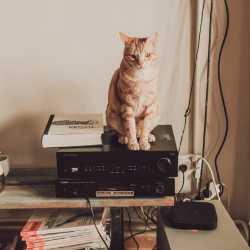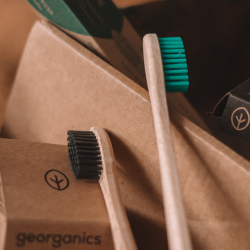More of us are paying attention to ourselves and our long-term wellbeing…
Perhaps we lack faith that institutions, like universities or workplaces, can be there when we need them. Wellness brands, of course, rush to offer solutions.
There’s a constant stream of new health tech, mental health apps, supplements, and exercise trends. And huge potential for brands to help us to help ourselves.
But as with almost every health intervention, these products or services will be ineffective without correct, regular use. And so, as with any element of self-care, we come back to behaviour change.
Behavioural science offers the answers — here are some great places to start.
Strike while the iron’s hot
There’s excellent evidence that our tendency to embark upon positive health changes ramps up at certain times in our life. Yes, the ‘midlife crisis’ is real. But hitting 40 isn’t the only birthday trigger. In fact, any milestone birthday seems to present an opportunity to re-evaluate. In 2014 Adam Alter and Hal Hershfield looked into this.
They analysed data from 42,063 respondents to the World Values Survey, a long-running project assessing global attitudes to a range of issues from gender and religion to health and trust. And they found that people are more likely to self-reflect, and consequently make changes, when their age ends in a nine — 29, 39, 49 etc.
Alter and Hershfield’s study extended beyond claimed survey data to include observed data sets. Analysing large data sources, they found that when age ended in 9:
- Men were 18% more likely to have an affair — based on ashleymaddison.com, an extramarital dating site
- People were 48% more likely to enter a marathon for the first time — based on data from athlinks, a race sign-up site
- People were statistically significantly more likely to attempt suicide — based on US data
Clearly, some big thinking is going on just before we hit a new decade in life. This is a huge opportunity for any brand in the business of helping us to take care of ourselves.
Lifestyle brands would do well to target customers just before milestone birthdays. And at any one time, that’s going to be 1/10 of everyone out there — a group large enough to consider when the rewards are likely to.
Make it as easy as possible
So, it’s clear when health and lifestyle brands should target their customers for maximum impact. Any other tricks to tell them how to? There’s one that seems almost too obvious to state, and yet is routinely neglected — make the healthy thing the easy thing. There’s plenty of evidence to support this approach. For example, in 2011, Paul Rozin from the University of Pennsylvania and his colleagues conducted a study into the effects of ease on eating behaviour.
Rozin and his colleagues ran an experiment in the college cafeteria, in which they slightly altered the accessibility of various healthier foods. They adjusted two factors; the location of the foods (by moving them closer or further away by about 10 inches); and the serving utensil available to self-serve healthy foods (spoon or tongs). The researchers monitored the consumption of healthy foods before and after they made these changes.
You can see from the results that making food less accessible can impact food choices. In fact, making healthy foods more difficult to reach/serve reduced consumption in the range of 8-16%.

There’s a lesson for every business here: even the most trivial of barriers can seriously affect our behaviour. Wellness brands should take a close look at how easy it really is to access and use their product or service. This might include anything from writing super simple comms, to completely intuitive product design or store layout.
There are always improvements to be made — tiny tweaks really do make a difference.
Change by stealth
In a recent article I talked about ways to sneak in sustainability initiatives without trumpeting them. The same applies to healthy eating and other positive lifestyle changes. There’s a 2017 study by behavioural scientist Linda Bacon that backs this up.
She tested whether listing plant-based dishes in a separate vegetarian section on restaurant menus influenced their selection. Results showed that showing these dishes separately actually reduced the chance of people ordering them. Specifically, only 6% of those who received the segregated menu chose a plant-based dish, compared to just over 13% who received the integrated menu (a 56% difference).
This and other studies suggest that labelling healthier options as such can actually do them a disservice. Brands should think carefully about their comms, and consider leaving out the virtue signals.
Featured image: Monstera Production / Pexels































